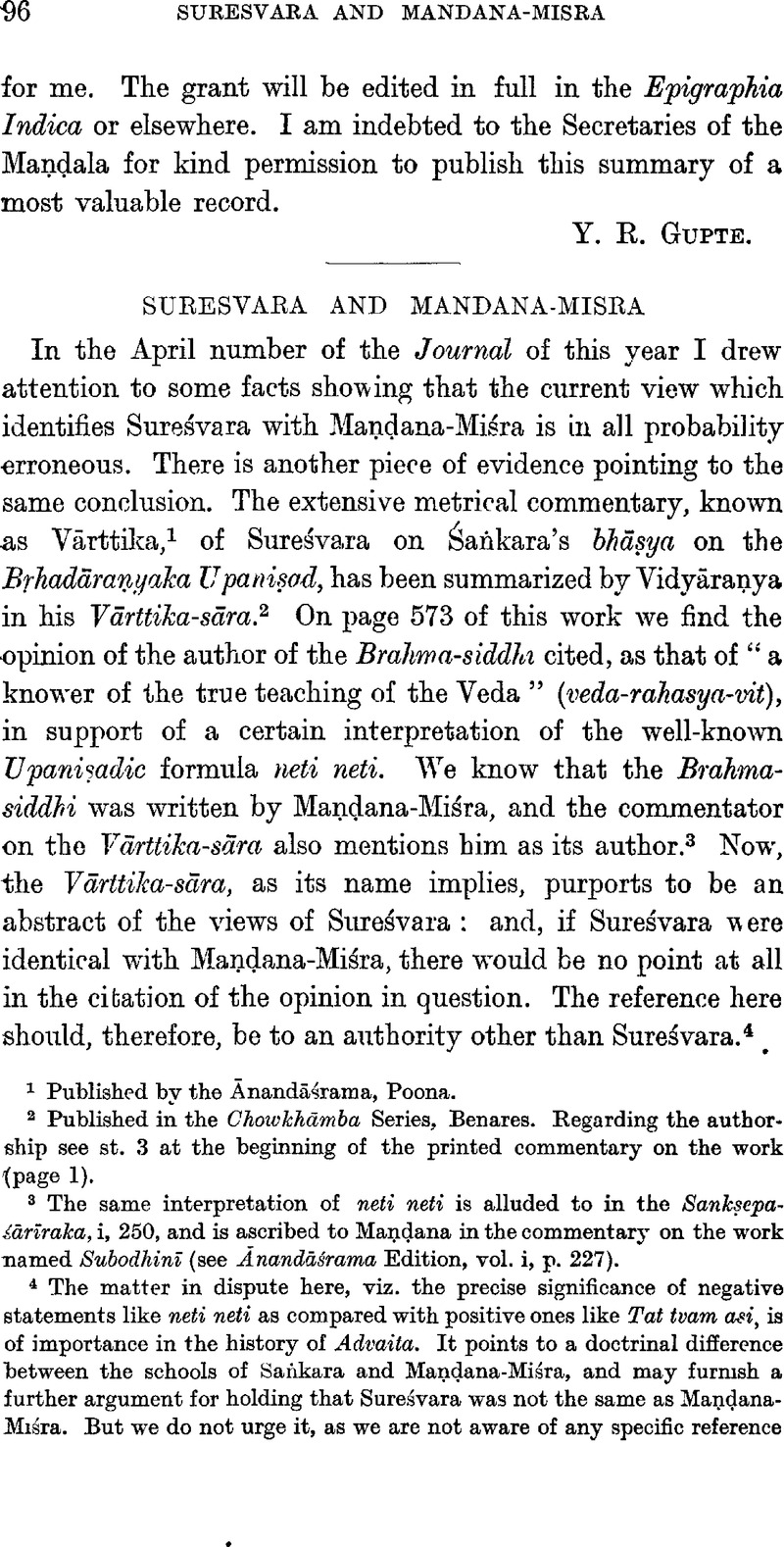No CrossRef data available.
Article contents
Suresvara and Mandana-Misra
Published online by Cambridge University Press: 15 March 2011
Abstract

- Type
- Miscellaneous Communications
- Information
- Copyright
- Copyright © The Royal Asiatic Society 1924
References
page 96 note 1 Published by the Ānandāśrama, Poona.
page 96 note 2 Published in the Chowkhāmba Series, Benares. Regarding the authorship see st. 3 at the beginning of the printed commentary on the work (page 1).
page 96 note 3 The same interpretation of neti neti is alluded to in the Sankṣepa-śārīraka, i, 250, and is ascribed to Maṇḍana in the commentary on the work named Subodhinī (see Ānandāśrama Edition, vol. i, p. 227).
page 96 note 4 The matter in dispute here, viz. the precise significance of negative statements like neti neti as compared with positive ones like Tat tvam asi, is of importance in the history of Advaita. It points to a doctrinal difference between the schools of Saṅkara and Maṇḍana-Miśra, and may furnish a further argument for holding that Sureśvara was not the same as Maṇḍana-Miśra. But we do not urge it, as we are not aware of any specific reference to this difference in the works of Sureśvara, although his immediate disciple Sarvajnātman, the author of the Saṅkṣepa-śārīraka, alludes to it (see i, 250–6).
page 97 note 1 Published in the Ānandāśrama Series.
page 97 note 2 2 See e.g. Canto x, st. 74 ff.




